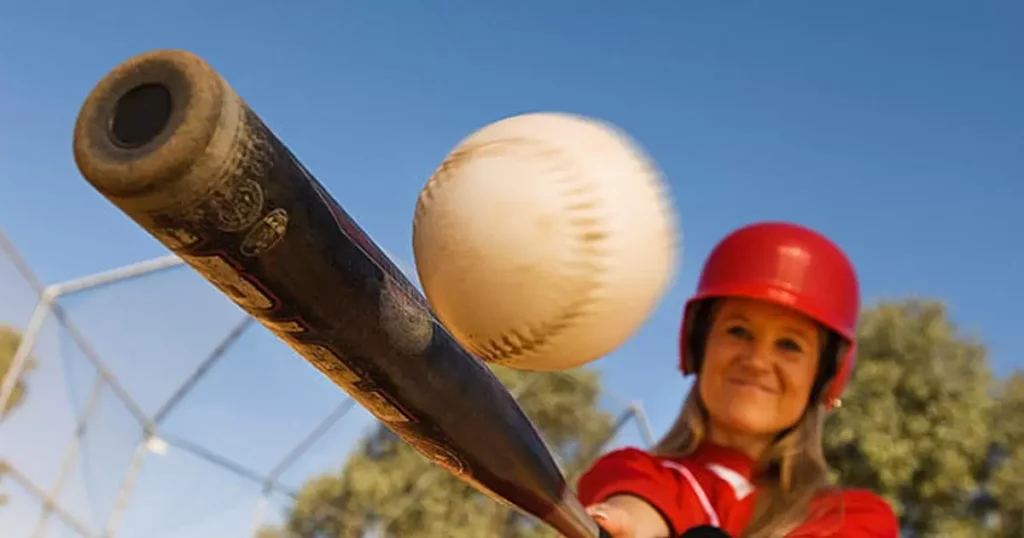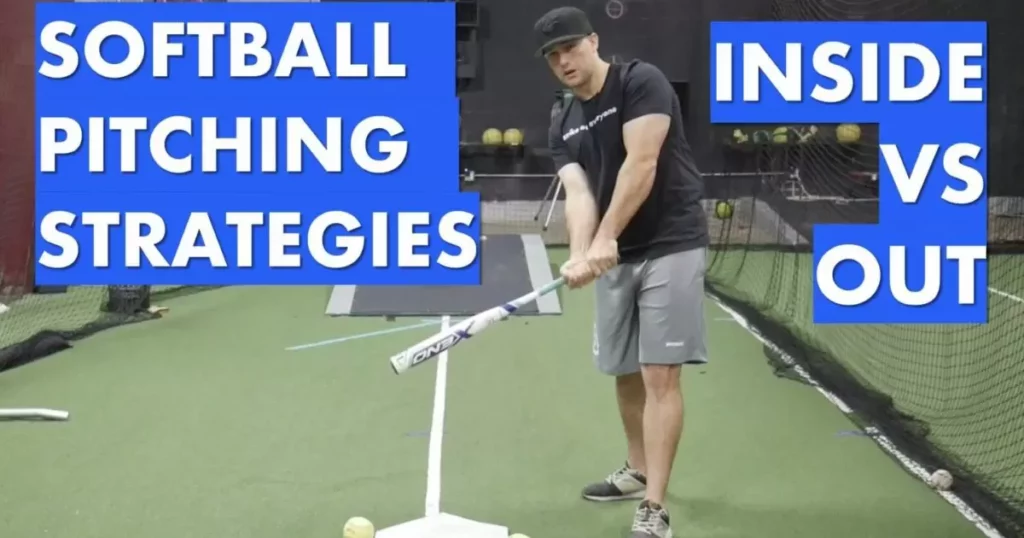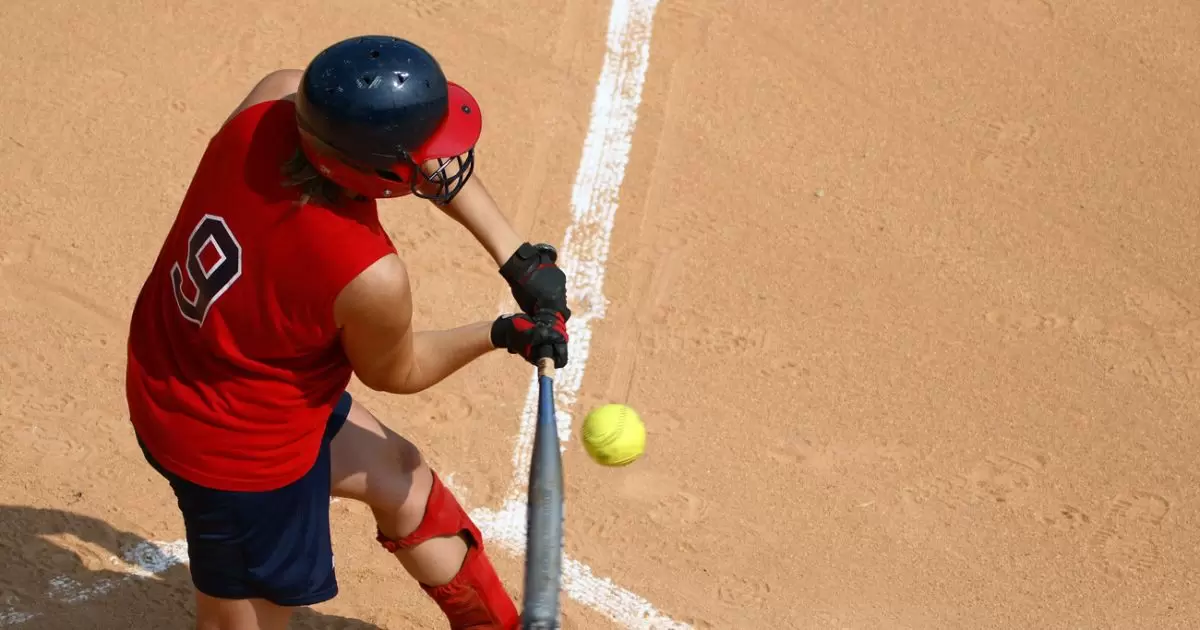Slow pitch softball is a variant of softball where the ball is pitched underhand at a slower pace, allowing batters more time to react. In this version, the pitcher must deliver the ball with an arc that reaches a minimum height at its highest point.
Ever wondered, How To Hit Slow Pitch Softball? Unlocking the secrets of effective hitting in slow pitch softball can transform your game. Whether you’re a beginner or looking to enhance your skills, mastering the art of hitting in slow pitch softball can make you a valuable asset to your team.
Hitting in slow pitch softball demands precision and timing. Understanding the arc of the pitch, adapting your stance, and refining your swing are crucial elements. With the right technique, you can maximize your hitting potential, sending that slow pitch soaring for the outfield. Explore the strategies and fundamentals to elevate your slow pitch softball hitting game.
Understanding the Dynamics of Slow Pitch Softball Hitting
In slow pitch softball, hitting involves a different rhythm compared to faster-paced games. The pitcher lobs the ball underhand in a slow, arcing motion, giving batters more time to connect with the ball. Understanding the dynamics of slow pitch softball hitting starts with recognizing this deliberate pace.
Perfecting your swing is key in slow pitch softball. Players need to adapt their timing and anticipate the ball’s trajectory. Unlike fast pitch games, where quick reflexes are crucial, slow pitch hitting requires a strategic approach. It’s about finding the sweet spot and delivering a controlled, powerful swing to make the most impact in the game.
Why Softball Players Need Specialized Techniques for Hitting Slow Pitch Softballs
Softball players face unique challenges when hitting slow pitch softballs. The slower pace demands a specialized approach to timing and technique. Unlike fastpitch, players have more time to react, requiring precision in their swings to connect solidly with the ball.
To succeed in hitting slow pitch softballs, players must master the art of adapting their swing to the deliberate pace of the pitch. Specialized techniques, akin to those employed by a utility player in softball, focus on optimizing the arc’s timing and tailoring the swing to meet the ball at the right moment. These adjustments are critical for softball players aiming to excel in the slow pitch game.
How to Perfect Your Slow Pitch Softball Swing?

Mastering the slow pitch softball swing is key to becoming a standout player. Begin with a solid stance, feet shoulder-width apart, knees slightly bent. Keep a comfortable grip on the bat, and position it at the shoulder level, ready for action. Next, focus on your timing. Anticipate the slow pitch’s arc and release.
As the ball approaches, pivot your back foot and swing smoothly, making contact in the sweet spot. Practice this motion consistently to hone your slow pitch softball swing and elevate your game. Perfecting the fundamentals ensures a powerful and precise connection between bat and ball, making you a force to be reckoned with on the softball field.
Common Challenges in Softball Hitting And Their Solutions
Hitting slow pitch softballs comes with its own set of challenges. One common hurdle is the deceptive speed of the pitch. As the ball floats in, batters often struggle with timing their swings. The arc of the slow pitch demands precision, making it tricky for players to connect with the sweet spot of the bat consistently.
To conquer these challenges, focus on refining your timing. Practice tracking the slow pitch’s trajectory, honing your ability to anticipate the ball’s arrival. Adjusting your stance to accommodate the unique arc can also enhance your hitting accuracy. Consistent practice with slow pitches, emphasizing timing and technique, is key to becoming a formidable hitter in slow pitch softball.
| Challenge | Solution |
| Deceptive speed of the slow pitch | Practice tracking the ball’s trajectory to improve timing. |
| Difficulty in connecting with the bat | Adjust your stance to accommodate the unique arc of slow pitches. |
| Inconsistency in hitting accuracy | Consistent practice with slow pitches, focusing on timing and technique refinement. |
Breaking Down the Science of Softball Arcs in Slow Pitch Hitting
In slow pitch softball hitting, the arc of the pitch is crucial. The pitcher delivers the ball in an underhand motion, creating a distinct trajectory. This arc requires batters to adjust their timing, as the ball follows a specific path, affecting how it should be approached with the bat.
To excel in slow pitch hitting, players must grasp the science behind softball arcs. Timing becomes paramount, with the batter needing to synchronize their swing with the descending trajectory of the pitch. Mastering this skill enhances hitting accuracy, making it essential for players aiming to maximize their impact on the slow pitch softball field.
How Can Softball Enthusiasts Improve Their Slow Pitch Hitting Accuracy?

Softball enthusiasts keen on enhancing their slow pitch hitting accuracy can start with refining their stance. Adopting a balanced and comfortable posture is key. Feet should be shoulder-width apart, knees slightly bent, and weight evenly distributed. This solid foundation promotes better control and stability during the swing.
Practicing timing is crucial for hitting accuracy in slow pitch softball. Softball players should focus on tracking the ball from the pitcher’s hand to the plate, honing their ability to anticipate the slow pitch arc.
Regular drills, such as soft toss or batting practice, can help enthusiasts develop muscle memory and improve their timing skills. By mastering the fundamentals of stance and timing, softball players can make significant strides in boosting your slow pitch hitting accuracy.
The Art of Timing in Slow Pitch Hitting
Timing is the essence of successful slow pitch softball hitting. The art lies in synchronizing your swing with the deliberate pace of the pitched ball. Start by closely observing the pitcher’s release, focusing on the ball’s trajectory, and anticipate the perfect moment to initiate your swing.
This split-second precision can be the game-changer in connecting with the slow pitch and sending it soaring into the field. To refine your timing in slow pitch hitting, practice is paramount. Develop a consistent batting stance and work on your reaction time during drills.
Adjusting your stance based on the pitch’s arc is crucial, ensuring your swing meets the ball at its optimal point. Remember, mastering the art of timing in slow pitch hitting is about repetition, keen observation, and adapting your approach to the unique characteristics of each pitched ball.
Tips for Building Strength in Slow Pitch Softball Hitting
Building power in slow pitch softball hitting is crucial for sending the ball soaring. Focus on strengthening your core and legs through targeted exercises. Squats, lunges, and core workouts contribute to a solid foundation for a powerful swing.
Perfect your technique by practicing a controlled and balanced swing. Emphasize the follow-through to harness maximum power. Incorporate resistance training to build muscle strength. Consistent practice and targeted exercises will enhance your overall strength, unlocking the potential for impactful hits in slow pitch softball.
Softball Sluggers’ Guide To Navigate the Nuances of Hitting Slow Pitch Softballs

In the world of softball, hitting slow pitch softballs requires a keen understanding of the game’s nuances. This Softball Sluggers’ Guide is your roadmap to mastering the art of hitting slow pitches. Learn how to read the pitch’s arc, adjust your stance, and time your swing for maximum impact.
To become a softball slugger, precision is key. Dive into the subtle intricacies of slow pitch hitting from recognizing the pitch trajectory to perfecting your swing. This guide equips you with the insights needed to navigate these nuances, empowering you to step up to the plate with confidence and finesse in every slow pitch softball encounter.
FAQ’s
How do you hit harder in softball?
Use your hips more, working on proper sequencing of your swing is critical to getting as much power as possible out of your body.
How do I increase my bat speed?
Underload training is a great way to increase bat speed. By overloading the muscles and then underloading them, you get stronger faster. The best way to do this is using free weights or resistance bands.
What is the best way to hit slow pitch in softball?
Stride toward the pitcher as you swing, in order to increase your momentum and bat speed. Line drives are fast and usually hard to catch unless hit directly at a fielder so that is why you want to swing level.
How can I practice softball fielding by myself?
To perform this drill, stand in front of a wall or use a rebounder and practice fielding the ball with proper technique.
Can girls slide in softball?
Getting young players to slide effectively is a key part of coaching girls’ softball. A player will develop confidence and a strong sliding technique with these softball tips.
Conclusion
Mastering the art of hitting slow pitch softballs is about finesse and practice. As you step up to the plate, remember the fundamentals, adjust your stance, watch the arc of the ball, and time your swing. These simple actions can turn a slow pitch into a powerful hit, contributing to your team’s success.
So, whether you’re a beginner or a seasoned player, keep refining your skills. With dedication and understanding, you can confidently face any slow pitch that comes your way, making each softball game an opportunity to showcase your hitting prowess. Enjoy the game, practice consistently, and let your slow pitch softball hitting skills shine on the field!








